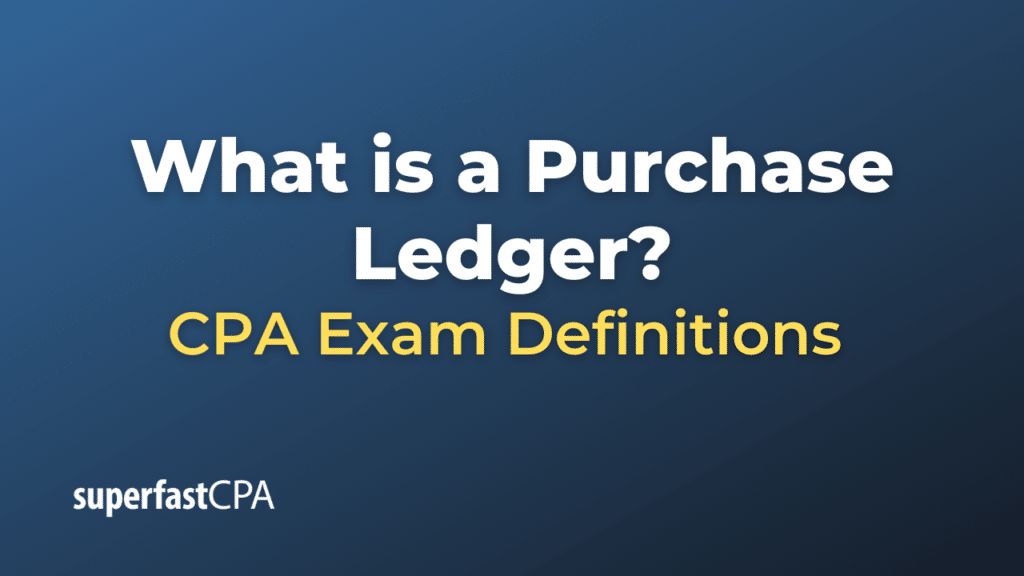Purchase Ledger
A purchase ledger, also known as an accounts payable ledger, is a subsidiary ledger that contains individual accounts for all suppliers from whom a business has made purchases on credit. Each supplier will have their own individual account in the purchase ledger.
The purpose of the purchase ledger is to provide a detailed record of each purchase transaction, including information such as invoice numbers, dates, amounts, terms, and details of payments made.
The total amount owed to suppliers at any given time, as shown by the purchase ledger, should equal the balance on the accounts payable account shown in the general ledger.
The purchase ledger is an important tool for managing and tracking a company’s debts and for ensuring payments are made accurately and on time. By reviewing the purchase ledger, a company can see how much it owes and to whom, allowing it to effectively manage its cash flow and maintain good relationships with its suppliers.
The purchase ledger will also include transactions related to any discounts received from suppliers, including the amount and date of the discount, as well as any discounts lost.
In a manual accounting system, the purchase ledger would be a physical book, while in a computerized accounting system, it would typically be a digital report that can be viewed and updated in real time.
Example of a Purchase Ledger
Let’s consider a simplified example of how a purchase ledger might work for a small business, XYZ Coffee Shop.
XYZ Coffee Shop makes credit purchases from two suppliers: ABC Beans, from whom they purchase coffee beans, and DEF Dairy, from whom they purchase milk.
Here’s what XYZ Coffee Shop’s purchase ledger might look like:
ABC Beans Account
- Invoice #123, dated Aug 1, $500
- Payment made on Aug 5, $490 (includes $10 discount for early payment)
- Invoice #124, dated Aug 15, $600
- Payment made on Aug 25, $600
DEF Dairy Account
- Invoice #789, dated Aug 1, $300
- Payment made on Aug 10, $294 (includes $6 discount for early payment)
- Invoice #790, dated Aug 15, $350
- Payment made on Aug 30, $350
At any given time, the total of the outstanding amounts in the purchase ledger should match the accounts payable balance in XYZ Coffee Shop’s general ledger.
For example, on August 20, the outstanding invoices would be $600 from ABC Beans and $350 from DEF Dairy, for a total accounts payable of $950. This is the amount XYZ Coffee Shop should see when they look at the accounts payable balance in their general ledger.
The purchase ledger helps XYZ Coffee Shop track each transaction with their suppliers, ensure they are paying their invoices on time, and monitor any discounts received.













